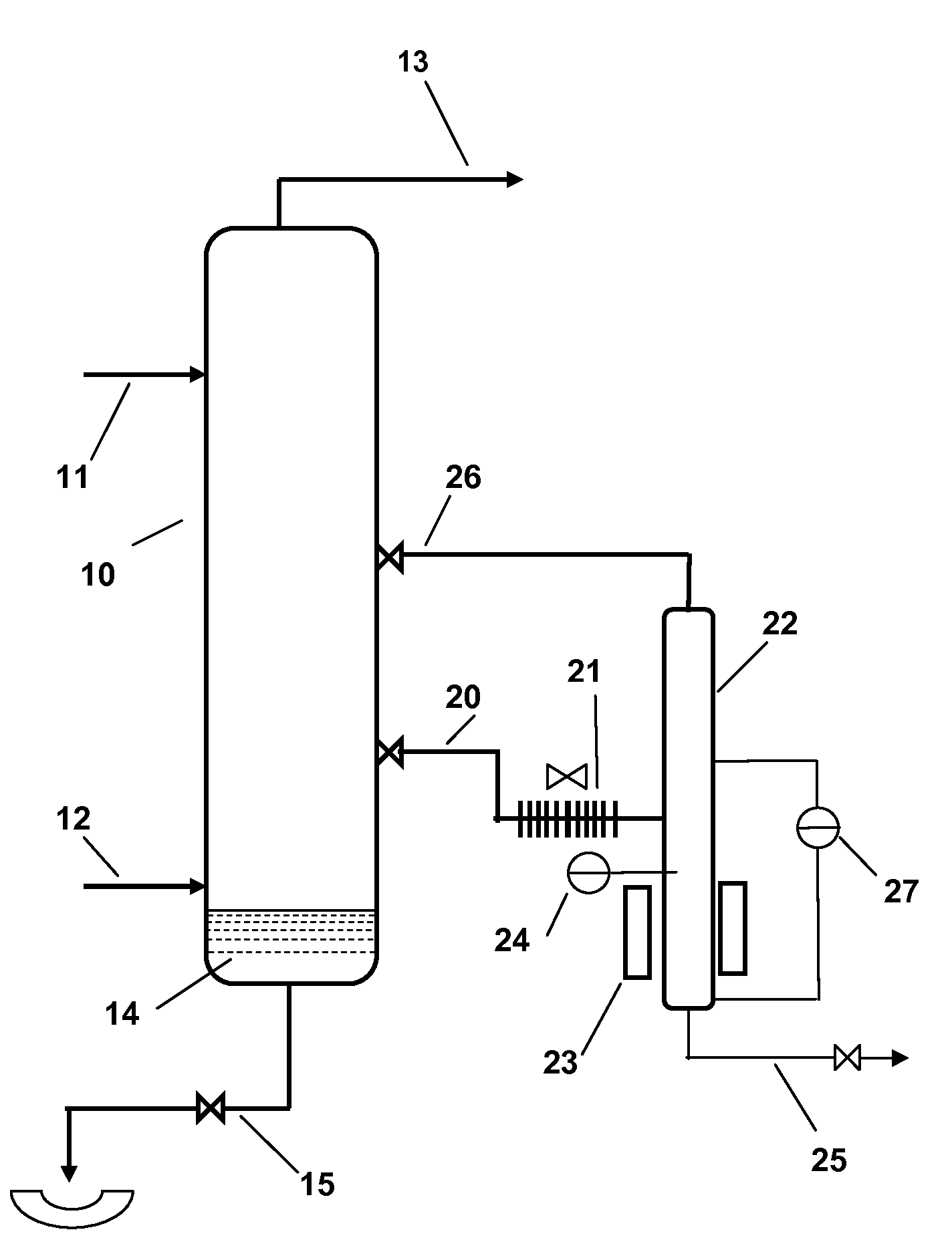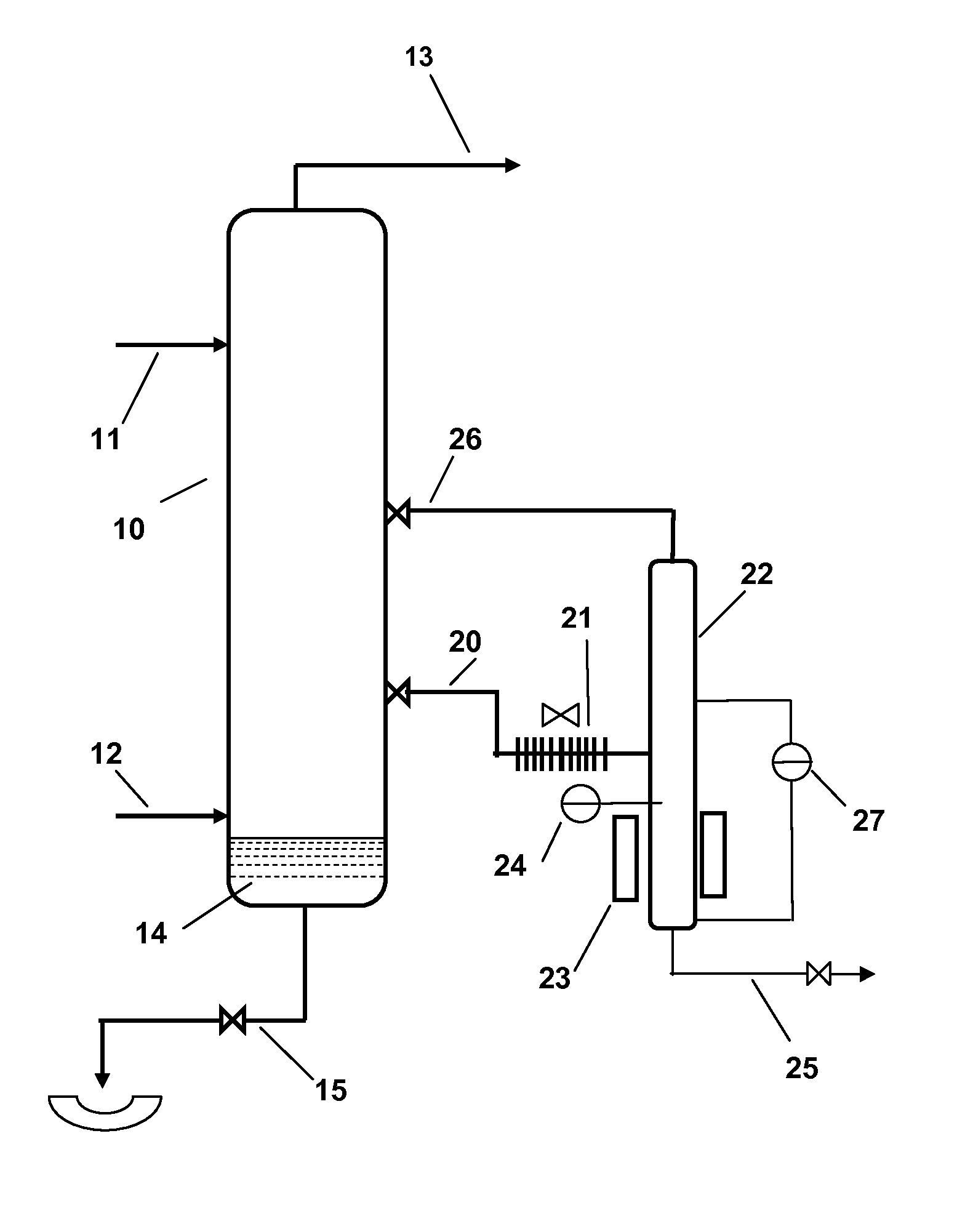HF alkylation process with acid regeneration
a technology of hydrofluoric acid and alkylation process, which is applied in the direction of hydrocarbon preparation catalysts, metal/metal-oxide/metal-hydroxide catalysts, and combustible gas purification/modification, etc., can solve the problems of large hydrocarbon volume, large volume requirement of stripping vessels, and fouling problems
- Summary
- Abstract
- Description
- Claims
- Application Information
AI Technical Summary
Benefits of technology
Problems solved by technology
Method used
Image
Examples
Embodiment Construction
[0012]The HF alkylation process of the present invention is carried out in the conventional manner as far as the alkylation reaction and separation of the hydrocarbon acid phases are concerned. In brief, a light C3-C5 isoparaffin, preferably isobutane, is alkylated with a light C3-C5 olefin in the presence of HF acid as an alkylation catalyst to produce, as the desired product, a hydrocarbon alkylate in the gasoline boiling range. As noted above, the parameters of the HF alkylation process are now well known and although the configurations of individual units may vary, their construction and operation are sufficiently well known to require no further description. Generally, a cooled reactor is used for the alkylation reaction itself with the olefin reactant being sparged into a stream of the HF acid catalyst and an excess of the isoparaffin reactant. From the reactor, the mixed phase stream is taken to an acid settler in which the denser acid is allowed to settle out by gravity from...
PUM
| Property | Measurement | Unit |
|---|---|---|
| water content | aaaaa | aaaaa |
| concentration | aaaaa | aaaaa |
| boiling | aaaaa | aaaaa |
Abstract
Description
Claims
Application Information
 Login to View More
Login to View More - R&D
- Intellectual Property
- Life Sciences
- Materials
- Tech Scout
- Unparalleled Data Quality
- Higher Quality Content
- 60% Fewer Hallucinations
Browse by: Latest US Patents, China's latest patents, Technical Efficacy Thesaurus, Application Domain, Technology Topic, Popular Technical Reports.
© 2025 PatSnap. All rights reserved.Legal|Privacy policy|Modern Slavery Act Transparency Statement|Sitemap|About US| Contact US: help@patsnap.com


